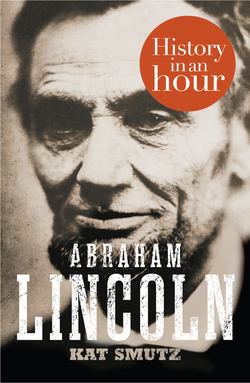Читать книгу Abraham Lincoln: History in an Hour - Kat Smutz, Kat Smutz - Страница 6
THE RAIL SPLITTER AND HONEST ABE
Оглавление‘Abe was the best boy I ever saw or expect to see.’
Sarah Bush Johnston Lincoln
In his autobiographies, Lincoln described his formal education as totalling less than one year. It is quite possible that this is an accurate assessment, rather than Lincoln’s well-known sarcasm. He and his sister attended what Lincoln called ‘ABC schools’. These schools were dependent upon the rare presence of anyone who was able to teach the community’s children. Such schools were funded by parents who wanted their children to learn to read, write and ‘cipher’ or do maths, which was known as the ‘Rule of Three’. Lincoln said that any education he acquired beyond that was picked up ‘under the pressure of necessity’.
That necessity seemed to drive Lincoln to use his minimal education to read and learn when and where he could. Books were a rare and valuable commodity on the frontier. Yet friends and colleagues would later speak of how Lincoln seldom was seen without a book or some sort of reading material during rare idle moments. One of Lincoln’s many nicknames, ‘Honest Abe’, was earned by his habit of borrowing books and never failing to return them.
In 1816, Thomas Lincoln put Kentucky behind him and moved his family to Spencer County, Indiana. His reasons have been variously reported as debt, difficulty with land titles, and a dislike of slavery. Whatever the reasons, his family was still living in a wilderness where 7-year-old Abe, a child big for his age, was handed an axe and expected to do his share of the work. He became very adept at splitting trees into long rails used to build fences. It was the beginning of a skill that he would practise often, and that would earn him another nickname, ‘the Rail Splitter’.
In Indiana, the family lived in what was known as a ‘half-face camp’. This was a three-sided structure of logs, with one side open to the elements. Such temporary structures were common while a permanent structure was being built. It would be a year before Thomas Lincoln completed a small log house for his family. Building the larger cabin alone was time-consuming, and there was little time to spare for the work. Land had to be cleared to grow crops to feed his family. There was only young Abe to help until the arrival of Thomas and Elizabeth Sparrow, with Elizabeth’s son, Dennis Hanks, the following fall.
It was in Indiana in 1818 that Nancy Hanks Lincoln, Lincoln’s mother, died, reportedly of milk fever. It was an illness transmitted through milk from livestock that fed on a poisonous plant known as white snakeroot. Thomas and Elizabeth Sparrow, who had accompanied the Lincolns to Indiana, also became ill and died. Now, Thomas was left with 19-year-old Dennis Hanks, 11-year-old Sarah and 9-year-old Abe to care for.
One year later, Thomas Lincoln returned to Elizabethtown, Kentucky, to marry a widow named Sarah Bush Johnston. Sarah, often called ‘Sally’, had once been courted by Thomas before he met and married Nancy Hanks. Thomas returned to Indiana, bringing Sarah, her three children, and a wagon load of furnishings with her. Reportedly, she took one look at her new home and her new stepchildren, and began to put the goods from the wagon to use.
Sarah Bush Johnston Lincoln, second wife of Thomas Lincoln and stepmother to Abraham Lincoln.
Sarah Lincoln kept a proper home for her new family and saw to it that Thomas Lincoln’s children were as well dressed as her own. It would not be the only improvements for the Lincolns: Sarah would also encourage productivity in Thomas Lincoln, and goodwill between her own children and her husband’s children. Like Abe’s biological mother, Sarah encouraged her stepson’s love of books and learning. Lincoln would describe Sarah Bush Johnston Lincoln as a ‘good and kind mother’.
